Best Melasma Treatment in Pune
Join 6,000+ Who Beat Melasma at Eva—Your Turn Starts Here
Melasma Treatment in Pune
Melasma is a common skin condition characterized by brown or grayish-brown patches that usually appear on the face—particularly on the cheeks, forehead, bridge of the nose, and upper lip. These patches are often symmetrical and may become more noticeable after sun exposure.
Unlike temporary tanning or minor pigmentation, melasma is a chronic form of hyperpigmentation triggered by internal and external factors. It is more prevalent in women, especially during pregnancy or hormonal changes, and is commonly referred to as the “mask of pregnancy.” However, men can also develop melasma.
The condition is not harmful or contagious but can deeply affect an individual’s self-confidence and skin tone uniformity. At Eva Pimples, Skin & Hair Clinic in Pune, we understand the emotional and cosmetic impact melasma can have—and we’re here with customized, safe, and advanced treatments to help you regain clear, even-toned skin.
Everything to know about Melasma Treatment
- Causes
- Types
- How to Treat Melasma
- When To See Dermatologist
Melasma is a multifactorial skin condition, meaning it can be triggered by a combination of internal hormonal changes and external environmental factors. Understanding the root causes is essential for effective treatment and long-term management.

Hormonal Imbalance
Hormonal changes are the most common cause of melasma. This includes pregnancy, birth control pills, hormone replacement therapy, and thyroid imbalances.

Sun Exposure
Ultraviolet (UV) radiation from the sun stimulates melanin production in the skin. Even a few minutes of unprotected sun exposure can worsen melasma.

Genetic & Hereditary
If melasma runs in your family, you’re at a higher risk of developing it. Genetic predisposition affects how your skin reacts to hormonal changes and sun exposure.
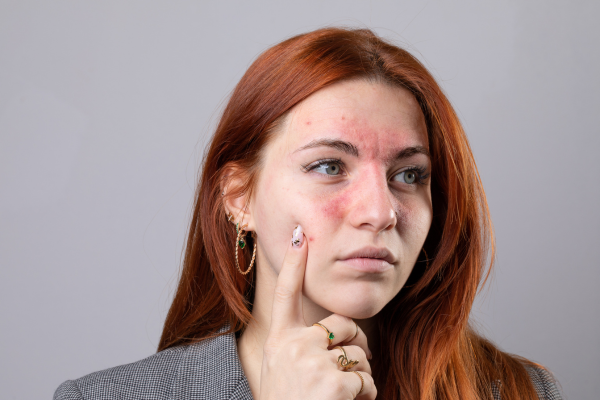
Bacterial Growth
Using harsh skincare products, over-exfoliating, or having allergic reactions can trigger post-inflammatory pigmentation, which may aggravate melasma patches.

Certain Medications
Some medications (like anti-seizure drugs) and cosmetics that irritate the skin or make it more photosensitive can contribute to melasma formation
Types of Melasma
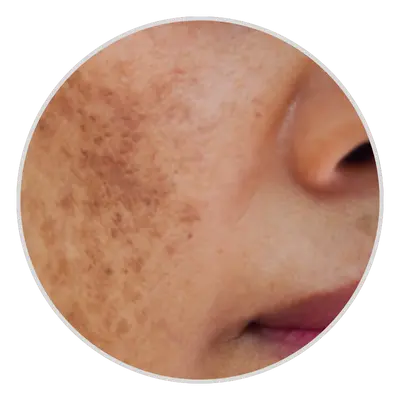
Epidermal Melasma
This type affects the topmost layer of the skin (epidermis) and is usually brown in color with well-defined borders.

Dermal Melasma
Pigmentation is located deeper in the skin's dermal layer. It appears as bluish or gray-brown patches and has blurred borders.
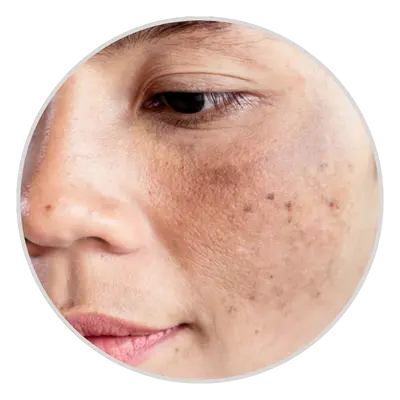
Mixed Melasma
The most common type, mixed melasma combines both epidermal and dermal pigmentation. The patches appear gray-brown and require a multimodal treatment approach,
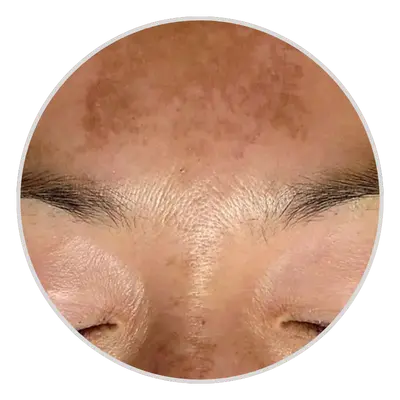
Centrofacial, Malar Pattern
These classifications are based on where the melasma appears on the face: Centrofacial: Forehead, nose, upper lip, and chin, Malar: Cheeks and nose area.
How can I treat my Melasma more effectively without getting any complications?
Managing melasma requires a combination of clinical expertise, personalized care, and a multi-pronged approach. Here’s how melasma is typically addressed:
Identifying the type (epidermal, dermal, or mixed) and depth of melasma using tools like Wood’s Lamp helps in tailoring the treatment effectively.
Daily use of broad-spectrum sunscreen (SPF 50+), sun-protective clothing, and limiting UV exposure are essential to prevent worsening of pigmentation.
Medical-grade skincare products containing brightening and depigmenting agents help regulate melanin production and fade existing patches.
Controlled fading of dark patches using dermatologist-prescribed creams and non-invasive procedures ensures visible results without skin damage.
Addressing underlying hormonal imbalances (e.g., thyroid issues or discontinuing certain contraceptives) can significantly improve melasma.
Melasma requires ongoing management—even after visible improvement—to prevent recurrence. Regular check-ups and follow-ups are key
When to See a Dermatologist for Melasma Treatment
Understanding when to seek professional help is crucial in preventing melasma from worsening and ensuring long-term results. Here’s when you should consider consulting a dermatologist:
If you have dark patches on your skin, especially on your face, that don't fade with time or over-the-counter remedies, it's a good idea to see a dermatologist.
If new patches appear or existing ones worsen despite using over-the-counter treatments, it's important to seek professional advice
When pigmentation darkens easily after minimal sun exposure, despite using sunscreen, it suggests photosensitivity—a common trigger in melasma—which needs medical-grade protection and care.
If you developed pigmentation during pregnancy, while taking oral contraceptives, or due to hormonal imbalances, a dermatologist can guide you through hormone-friendly treatment protocols.
If melasma is affecting your self-confidence or quality of life, early consultation can help you feel in control of your skin health with the right approach and timeline.
Not all pigmentation is melasma. A dermatologist can accurately diagnose your condition—whether it's post-inflammatory hyperpigmentation (PIH), freckles, or lichen planus pigmentosus—to avoid incorrect treatments.
Best Melasma Treatments in Pune Offered at Eva Pimples, Skin & Hair Clinic

At Eva Pimples, Skin & Hair Clinic, we combine dermatological expertise with evidence-based technologies to offer safe, personalized, and result-oriented Melasma Treatment in Pune. Depending on the depth, type, and triggers of melasma, we curate a treatment plan that delivers maximum efficacy with minimal downtime.
Here are the top melasma treatments we offer:
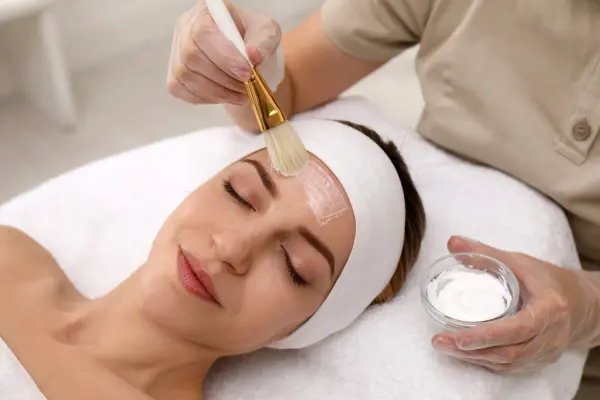
We use specialized peels like Mandelic Acid, Lactic Acid, and Yellow Peel that help in controlled exfoliation and skin lightening. These peels reduce surface pigmentation and promote cell turnover, revealing a more even-toned complexion.
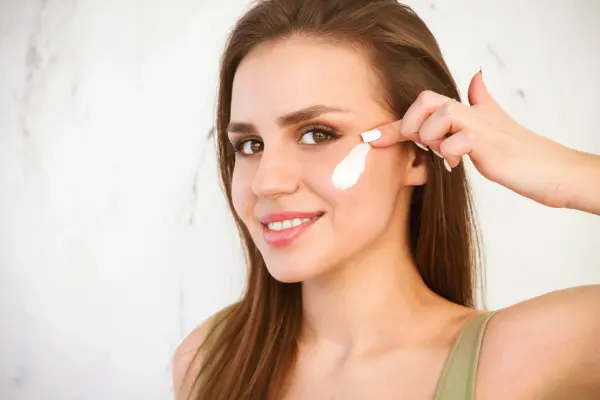
Oral and Topical Creams
Our dermatologists may prescribe customized topical agents containing Hydroquinone, Azelaic Acid, Kojic Acid, or Tranexamic Acid based on skin type. In some cases, oral tranexamic acid is also used for stubborn melasma, especially when linked to hormonal factors.
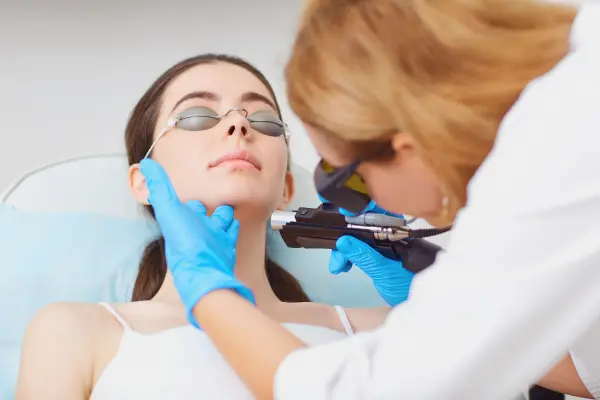
This advanced laser treatment gently targets melanin in the deeper layers of the skin, breaking down excess pigmentation without damaging surrounding tissues.
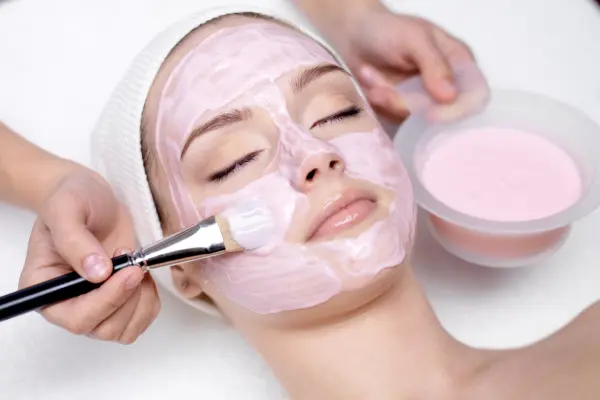
Medifacials for Pigmentation
We offer Pigment Control Medifacials designed to nourish, hydrate, and clarify the skin using anti-inflammatory serums and ingredients like Vitamin C, Niacinamide, and Arbutin. These facials complement other clinical treatments and enhance results.
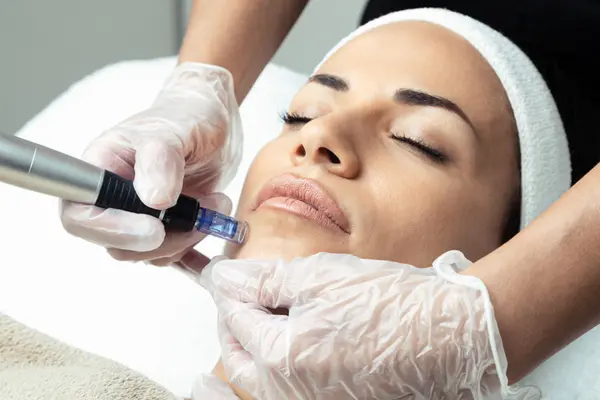
Microneedling stimulates collagen while delivering depigmenting serums or platelet-rich plasma directly into the skin. This not only improves skin tone but also texture and hydration—making it ideal for melasma with fine lines or dullness.
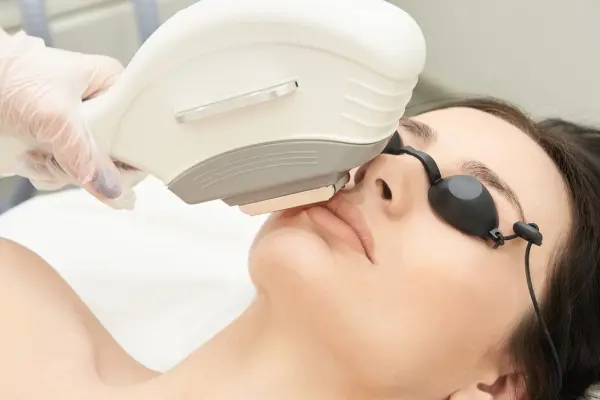
Sun Protection & Maintenance
Since UV exposure is the biggest trigger for melasma, our dermatologists will help you choose broad-spectrum sunscreens and tailor a long-term maintenance plan including anti-pigment serums and antioxidants to prevent recurrence.
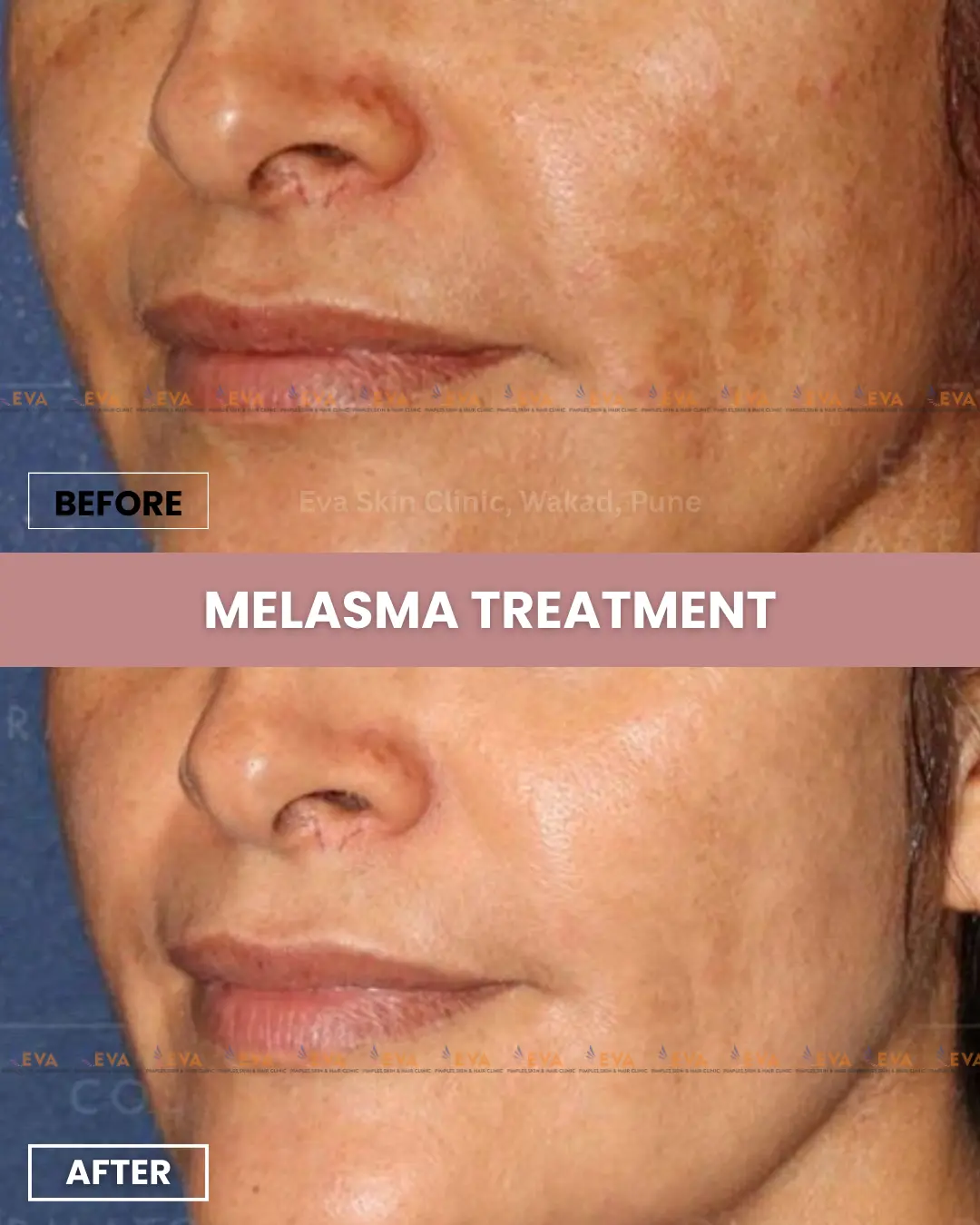
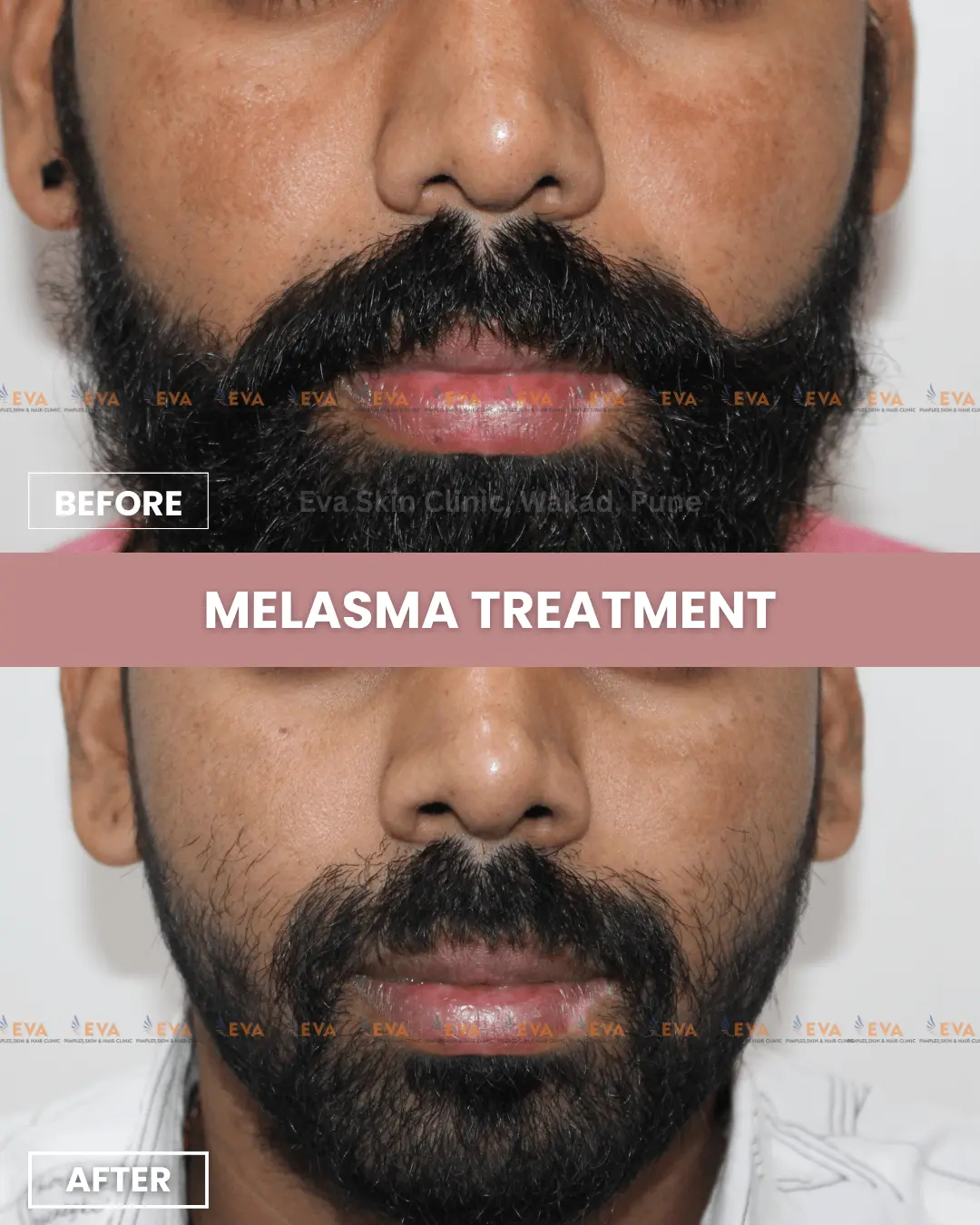
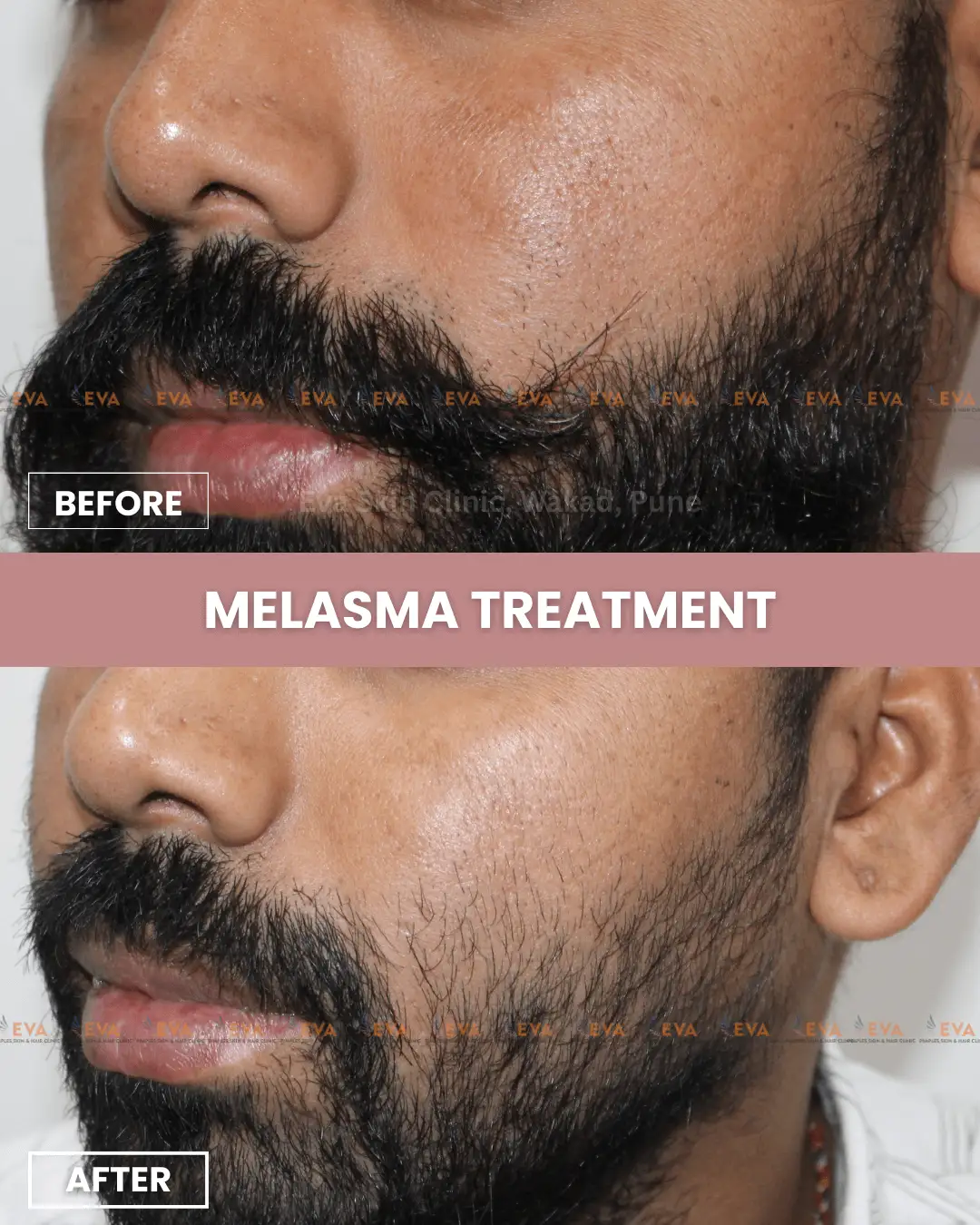
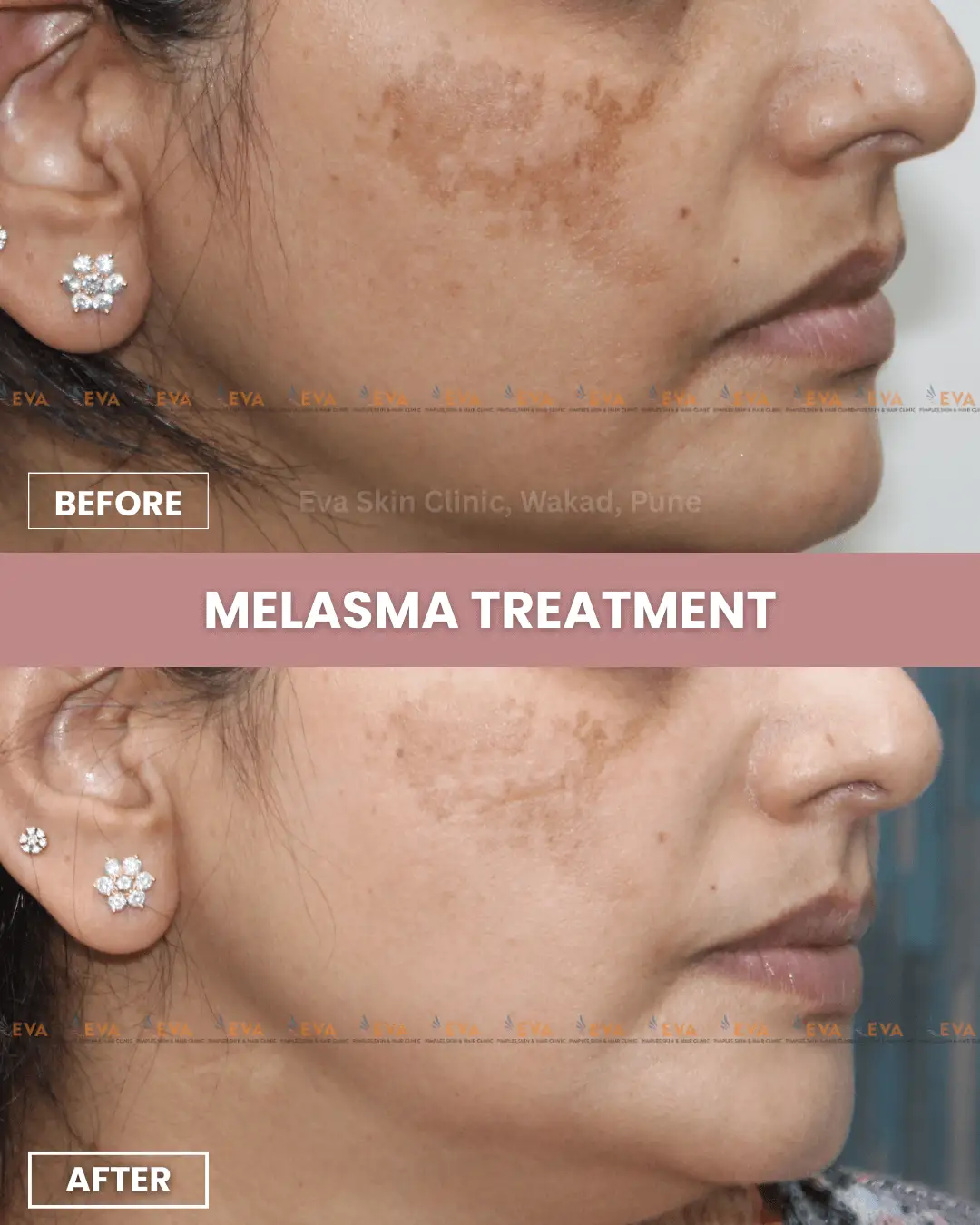
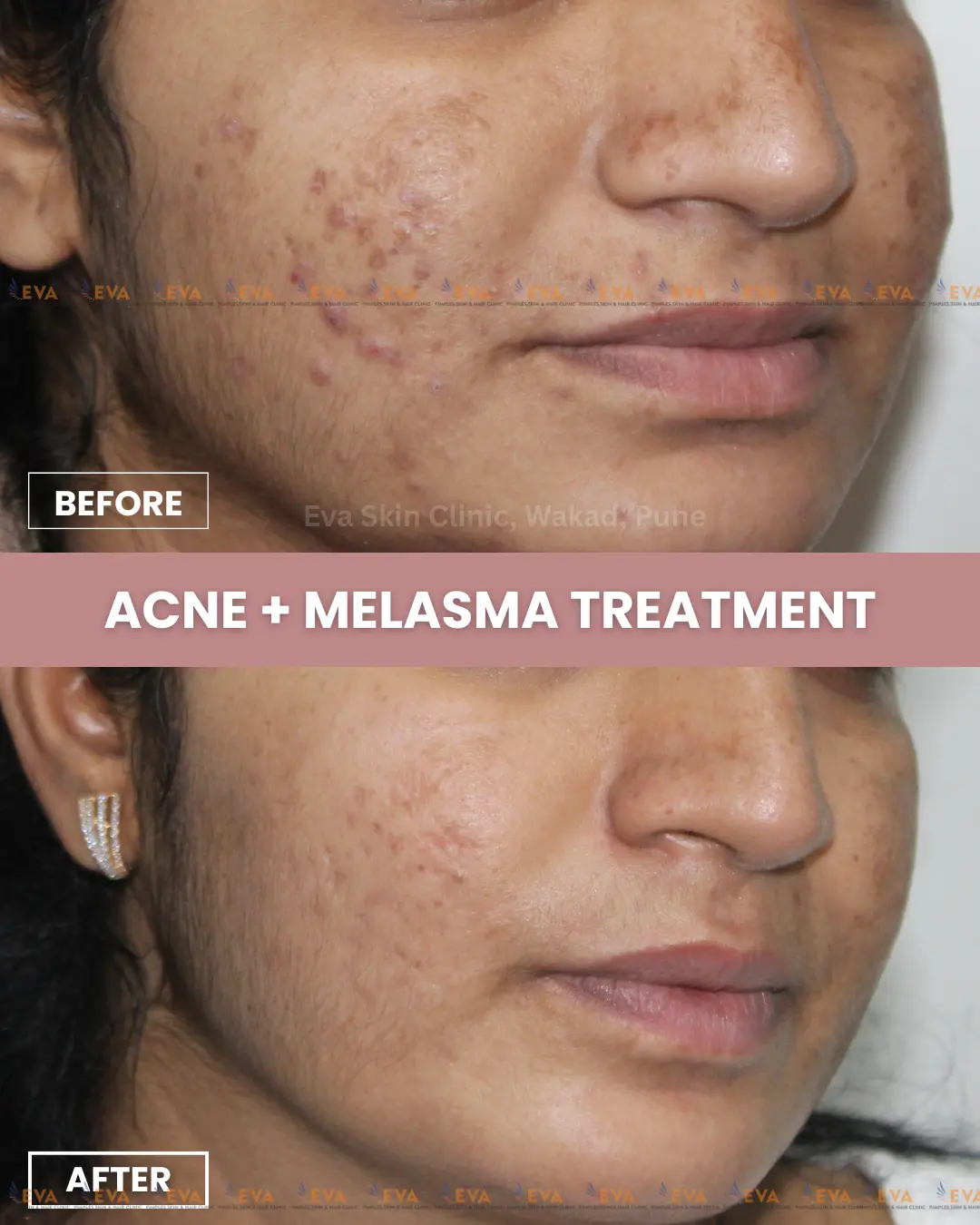
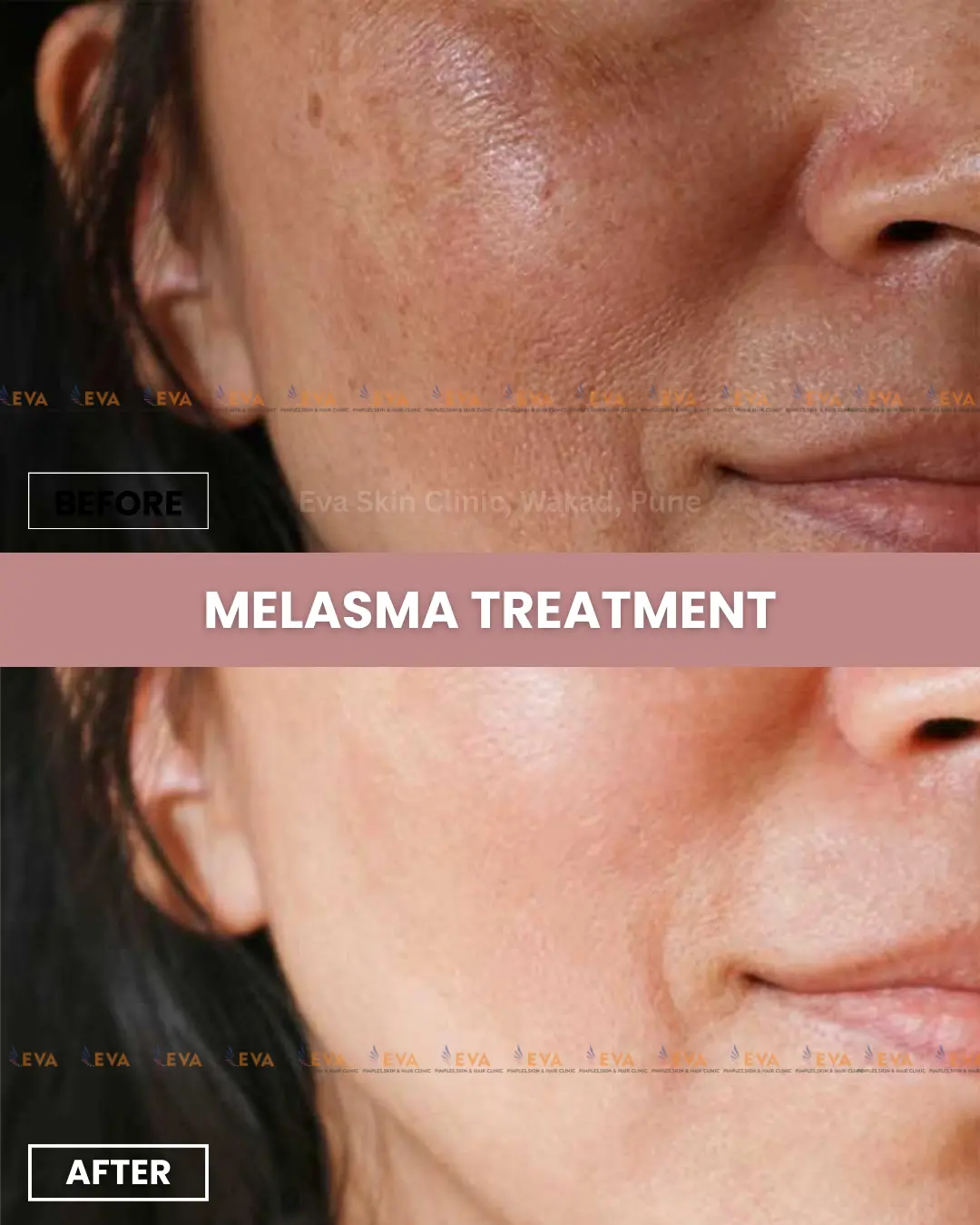
Thousands have seen a visible difference—will you be next?
Break Free from the Mask of Melasma, start your journey towards clear, confident skin
just like 6000+ of our happy patients!
Because Happy Skin Tells the Best Stories
Posted onTrustindex verifies that the original source of the review is Google. Genuine, good doctors. I saw results within 2 weeks. Good service all along. My reason for coming here were the results my sister got. So i knew it could be trusted. Thanks to everyone's work!!!Posted onTrustindex verifies that the original source of the review is Google. 5 stars for the overall experience I had with this clinic; however, I felt disappointed in today's hydrafacial session. First, they charged 1800 for this, and after the session, it felt like it was the same as the peel-off I had two months back. There was nothing new or any difference between the peel-off and the hydrafacial. Second, there was a lot of disturbance during the session; someone kept entering the room three times, and if you give any sheet mask to us, please include this in the hydrafacial instead of charging separately . Please take this as a feedback.Posted onTrustindex verifies that the original source of the review is Google. Great experience! The results were visible within a few sessions. Professional staff and effective treatment — highly recommend!Posted onTrustindex verifies that the original source of the review is Google. Within just 4 months of hair treatment for hairloss and hair thinning, i have found reduce in hairfall as well as quality has improved a lot.Posted onTrustindex verifies that the original source of the review is Google. Great Experience at Eva Clinic! The staff was very polite and caring. I felt comfortable throughout my treatment. Excellent service and support. Truly satisfied and would highly recommend Eva Clinic!Posted onTrustindex verifies that the original source of the review is Google. Good treatment for hair fall solutionPosted onTrustindex verifies that the original source of the review is Google. I had a wonderful experience at Eva Clinic. The staff was professional, friendly, and attentive. The skin treatment I received was very effective, and they explained everything clearly. Highly recommend for anyone looking for reliable hair and skin care!Posted onTrustindex verifies that the original source of the review is Google. I visited Dr Poonam for acne and I’m extremely happy with the results. The doctor was very patient, explained the root cause clearly, and recommended a treatment that started showing results within a few weeks.Posted onTrustindex verifies that the original source of the review is Google. IT was a great experience with you And thank you for considering your productsPosted onTrustindex verifies that the original source of the review is Google. Good resufor acneLoad more

